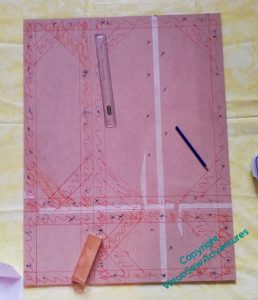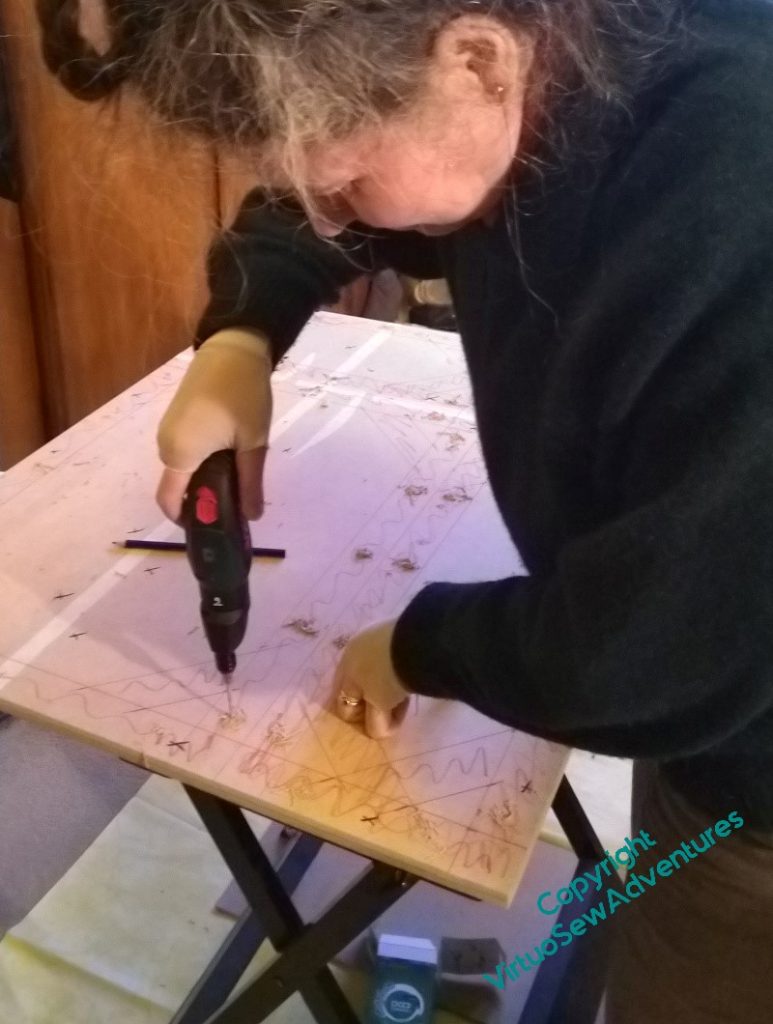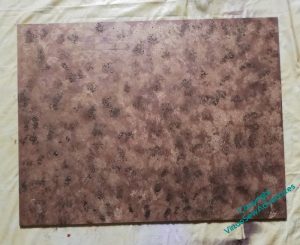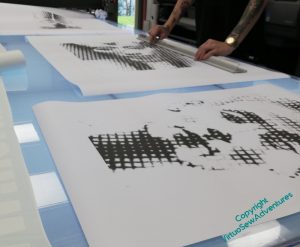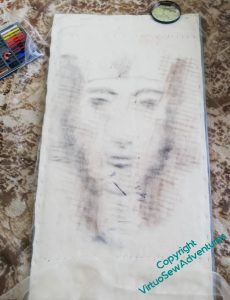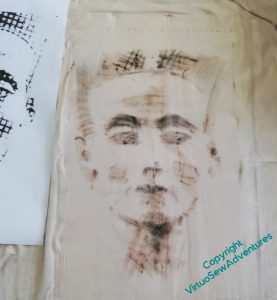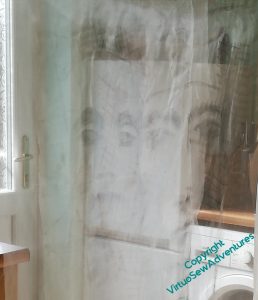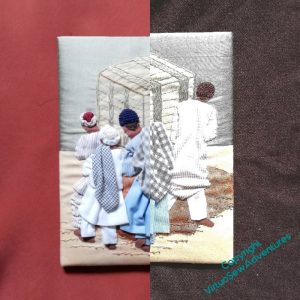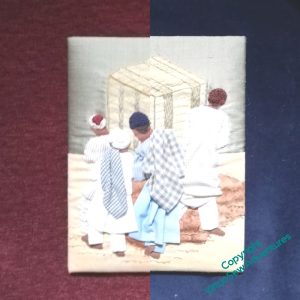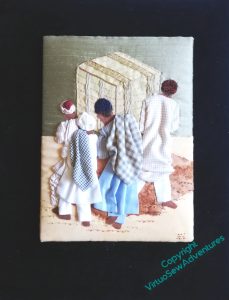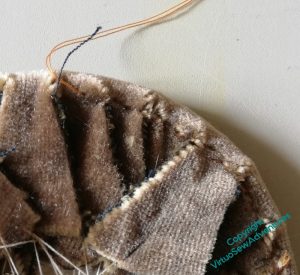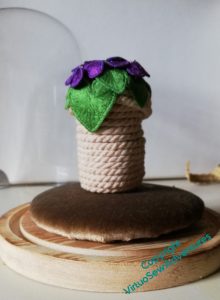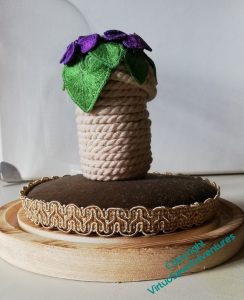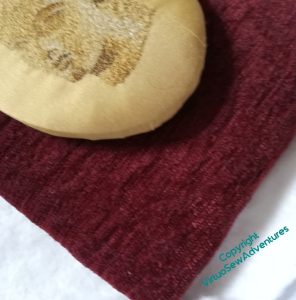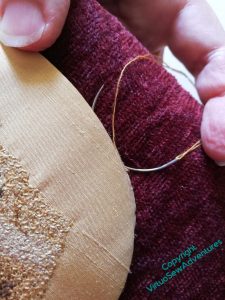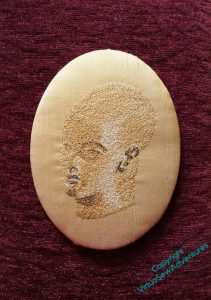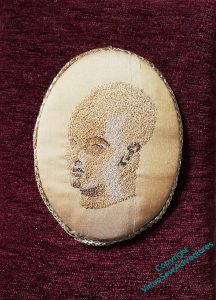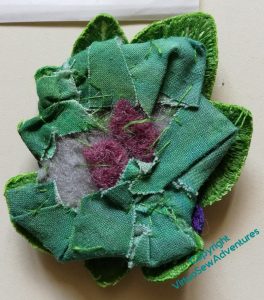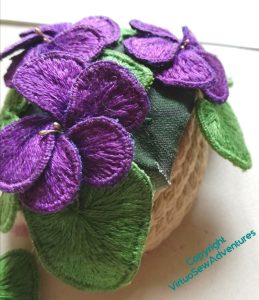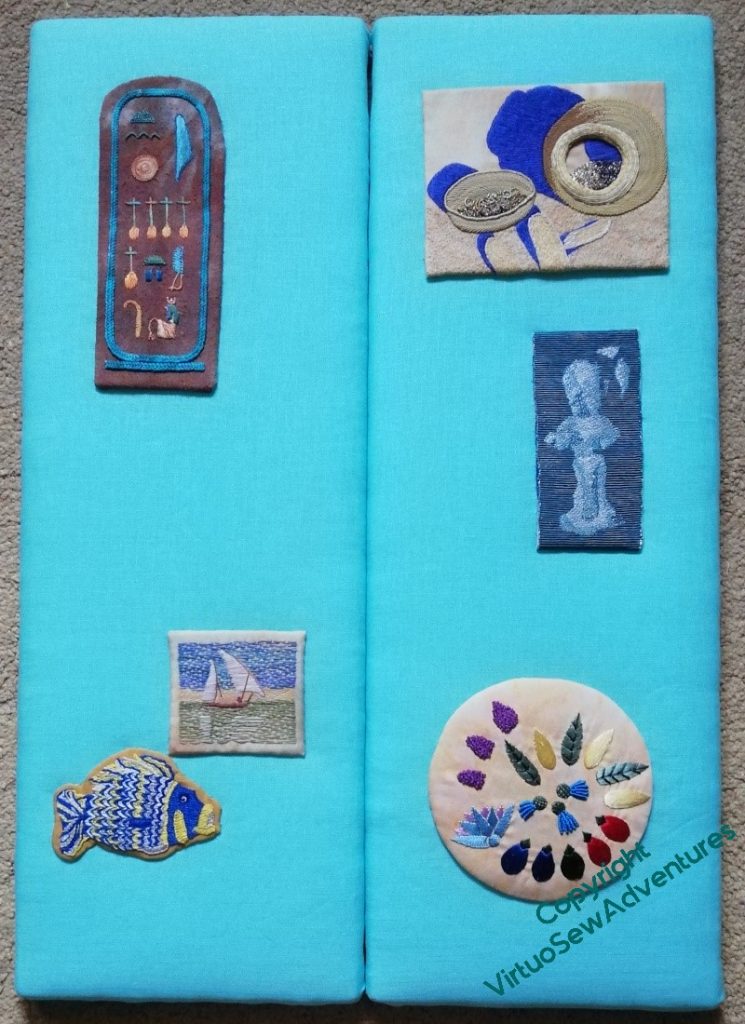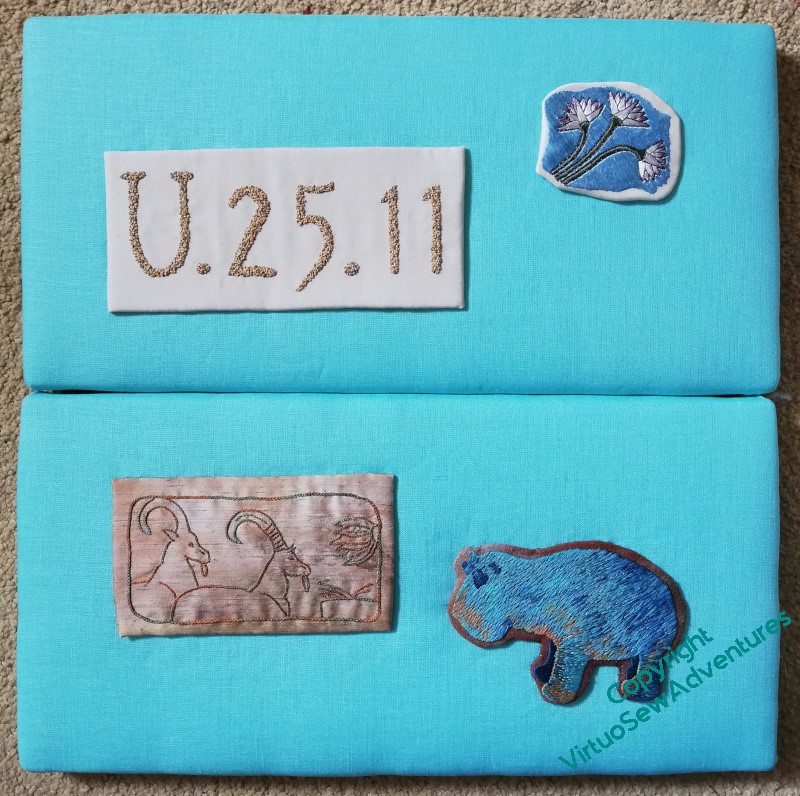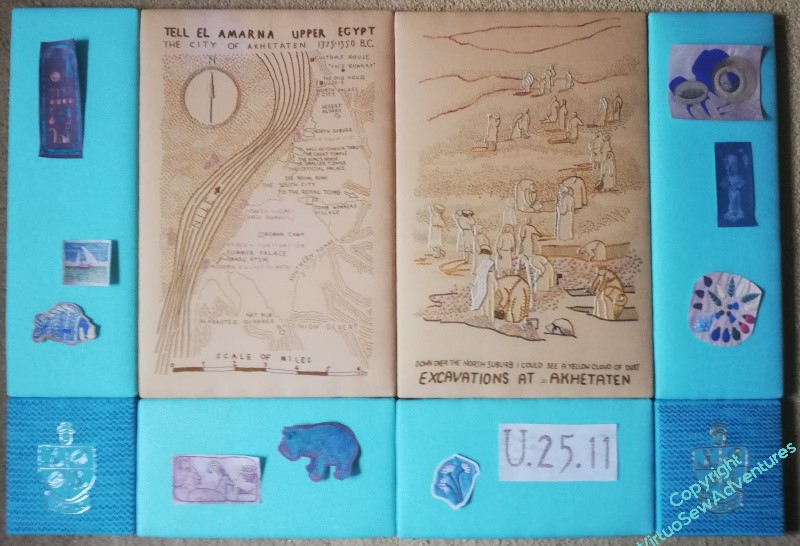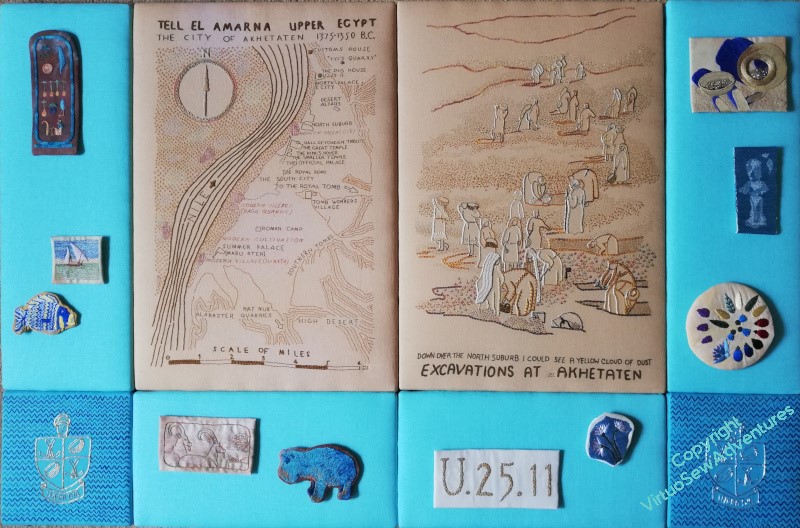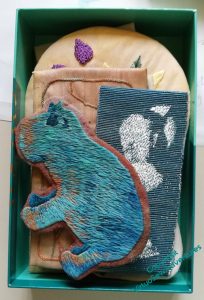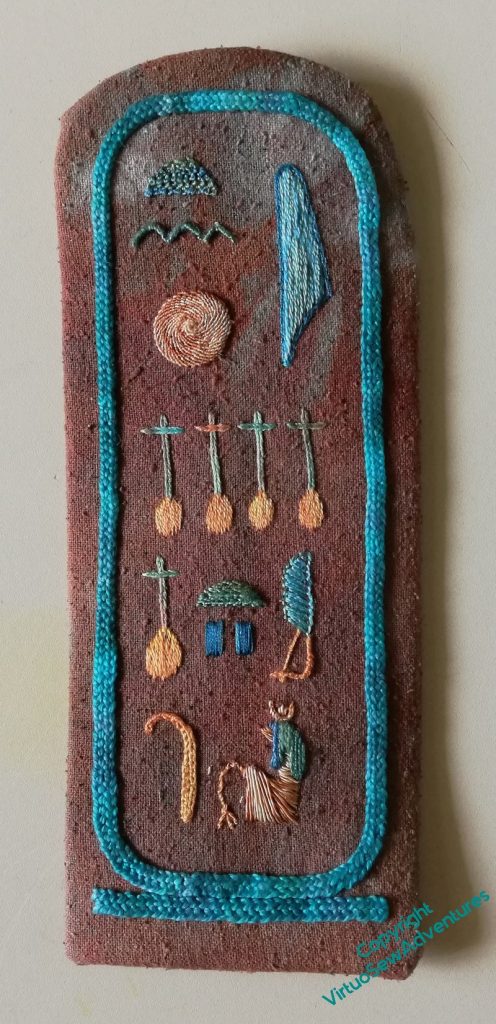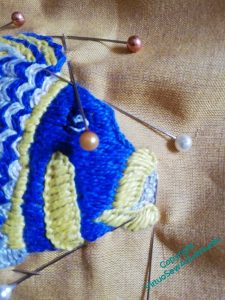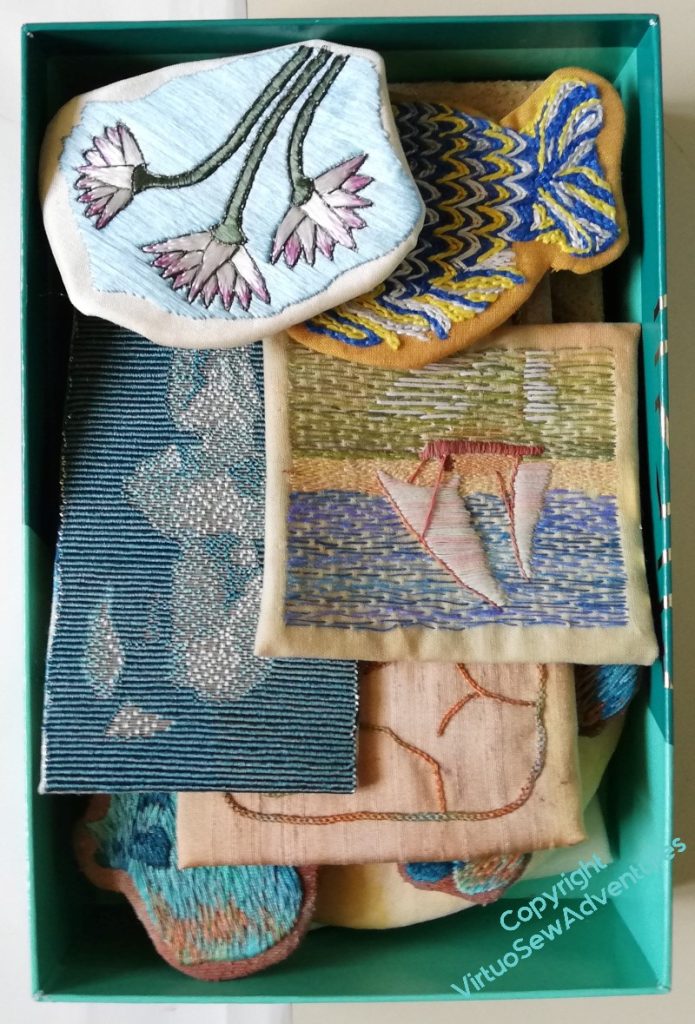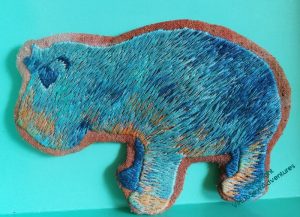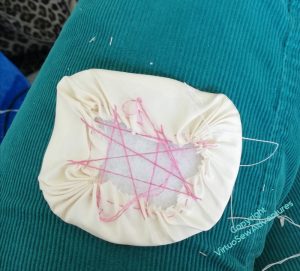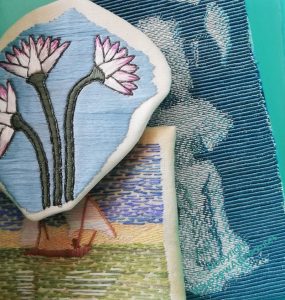Category: Dreams of Amarna
Assembling the Panels, first stage
There’s always more involved than you think, isn’t there…
I had all sorts of thoughts about keeping the four panels together, but in the end the simplest solution seemed to be a large panel on the back, with screws through to the wooden frames. So my first visit was to our wonderful local framer, because I thought the sort of hardboard she uses to back her frames would be enough.
No, she said, it’s not strong enough, you need something a bit beefier. So I went to a local(ish) building supplies store that is willing to cut material to size, and they duly did so. But not quite right (fortunately, too big) so I had to go back and get them to do it again.
Once the boards were the right size, I set out to map the frames onto the board, so as to work out where to put the holes for the screws. I got thoroughly confused and lines and more lines and planned holes and replanned holes and very nearly howled with despair on more than one occasion, but in the end, I had a Plan of where to place my screws.
Then we taped the two boards together so that one set of drilling would do (that was a very good thought of The Australian’s), and spent ages drilling those holes.
In the interests of having a nice looking back, not covered with a zillion lines in fibretip pen, I’ve sponged the back with two shades of gold acrylic paint.
We’ll get to the end of this eventually – I hope!
Beginning The Overlays
I had originally intended to screenprint the gauze overlays for the main Amarna panels, but it was proving difficult to find a way of doing it large enough, without excessive cost. Besides, since I have been sketching, painting, and drawing very much more often over the last few years, I’m much more willing to risk my arm (as it were) by doing it in a more immediate manner.
So I found a local printer who was willing to print out my manipulated images of Akhenaten and Nefertiti so I could use them as guides. They had a torrid time with a brand-new printer that kept on not doing as they expected, but they got there in the end, and I stretched my gauze over the printouts, attached to a padded board, fished out some brown inktense blocks, and got started.
Of course it’s difficult to see where you’ve been on a gauze when the template (for want of a better term) is as strongly marked as these, so when I felt I’d been all over the image once, I drew out the template and went back in by eye.
I still don’t consider I have all that accurate an eye for angle and form, so that was truly terrifying.
When I hung them from the laundry rack in the kitchen, however, they were “there and not there” in a very promising manner.
Whether or not these are the final versions I use (I’ve enough gauze to go again if they turn out to be the wrong colour or if I need to tweak the tones), will have to wait until I’ve been able to set them up in front of the panels, but until then, I think I can say that I’m very pleased!
Mounting Choices Again
There were some quandaries about mounting “Loading The Felucca”. Burgundy? Navy? Copper? Brown? I posted these pictures on various social media sites – each of which picked a different preference, which wasn’t helpful at all, but at least left me free to apply my own judgement.
So I chose the same navy blue velvet I used for the Amarna Royal Family. All the other fabrics had something going for them, but the navy blue brought out the colours and shapes more emphatically and truly – although I fear you will have to take my word for it, as my photograph doesn’t really bring out the blueness of the velvet!
However, in the course of the final mounting process, I discovered that the embroidery was no longer visibly signed. Curses!
Then I checked, and neither was Ankhsenspaaten. Curses again!
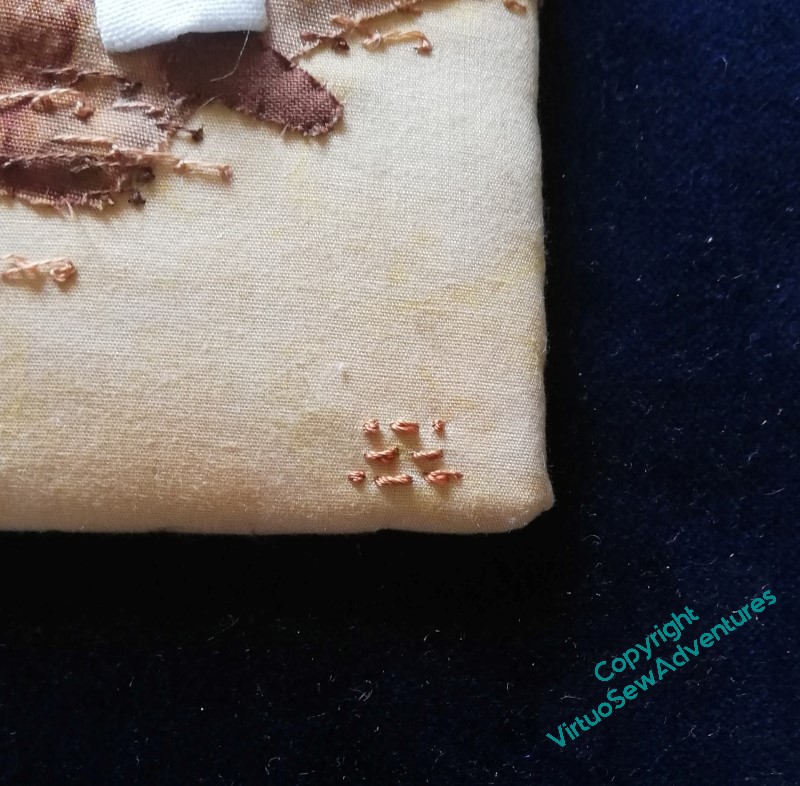
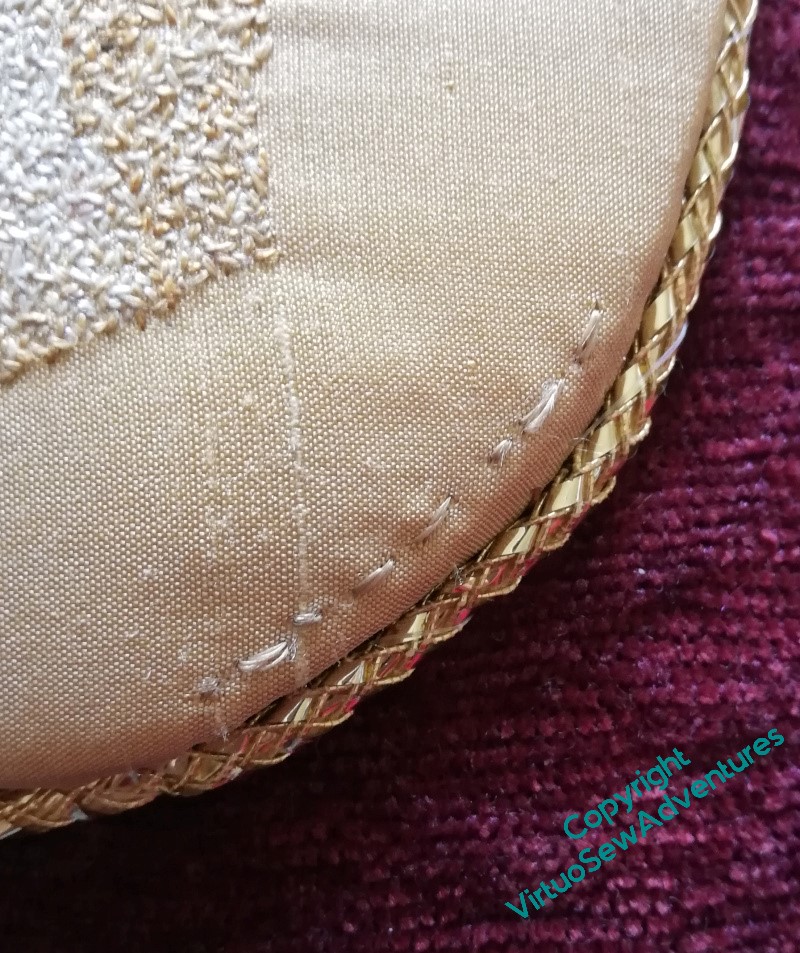
They are now…
Cushion For The Coiled Pot
I clipped the edges of the cushion for the coiled pot, and laced the tabs together. That was a bit less bulky than before, but still clunky and rather unstable.
<thinks hard> I wonder whether this will work…?
I stitched (that curved needle again!) close to the edge of the card mount, using a strong, doubled, cotton thread. Fortunately I’d backed the card with some heavy pelmet vilene, which meant that some stitches went into that as well as the velvet.
Then, with great trepidation, I cut off the first tab. And then the one it had been attached to.
Ooh, the whole thing didn’t disintegrate!
So I carried on , and it still didn’t disintegrate (although velvet is a very messy fabric to cut!). I tried it in place – much better, stable, lower, neater. But yes, still shedding fragments of velvet. That’s easy to fix – a couple of layers of pva glue on the underneath (me, reaching for glue? who am I, all of a sudden?!), and there’s no more shedding.
However, I do think it looks a little unfinished.
So, trimmed with a bit of furniture braid, which makes a neat little edge, slightly camouflaging what I’ve done and how.
If the daisy beads escape, it might help to keep them safe, as well.
Mounting Ankhsenspaaten
After some thought, I decided to take the inspiration of mounting for the Head of Ankhsenspaaten from Victorian mounts for minaiture portraits, so I went to my local framer, who goes by the not-at-all-exaggerated business name of “Framing Genius” (seriously, quite apart from any headaches I may give her, I’ve seen some of the other things she’s been asked to do!), and we worked out what size of oval would work for this idea. Then her clever computer controlled cutter cut out an oval that was exactly the size and proportions I wanted.
Further thought, and some playing with cards and fabrics, helped me to decide to use for her background the same burgundy chenille upholstery fabric that I eventually used to mount the Colossus of Akhenaten. None of the Amarna pieces are going behind glass – if eventual owners wish to do so, that’s their prerogative, but I like the immediacy of feeling you get, looking at a fabric or thread without any glass in the way – so the next job was to stretch the burgundy over a wooden frame and use that wretched curved needle to ladder stitch the two together.
I may be being unfair. I still don’t find a curved needle at all natural to use, but I am at least beginning not to whimper every time I look at it. It’s very useful for the purpose I’m using it for!
Once I had her neatly mounted, I sat back for some of my usual Thoughtful Staring.
The original inspiration sometimes had a cord or ribbon trim around the oval of the miniature – maybe as it stands the transition is a little abrupt?
I’ve a small collection of odd metallic cords bought at an Embroiderer’s Guild Sale, so I rummaged in that, and found something that might work.
Then I looked a little harder and realised that the thread I had used to attach the oval to the velvet would show. For the first time, I found a use for the Peri-Lusta Invisible Thread I found in my Grandmama’s workbox!
I’ve not got the gold thread quite correctly placed yet (I ran out of patience with myself at this point), so I need to spend a bit of time tweaking that, but I think where it is in the right place it is definitely improving the look.
Violets in place
When I looked again at the back of the Clump, or Mat, of violets, it became clear to me why it hadn’t followed the contours of the little pot I’d made. The padding is much too broad, and much too inflexible. It was a sensible choice to do this when I was planning to include the Violets among the spots on the main panels, but when I began to look at assembling them, the Violets and the Daisy Beads drew closer together and started to look somewhat askance at the rest of what I planned.
I began to undo the padding, and found the whole mat disintegrating on me (not really a surprise), so I went back to the beginning. I made another piece of painted calico, redesigned the pattern of my Mat, pierced holes in the new calico and began to reassemble the whole thing, with only one small piece of felt to pad it, and some extra stitching to entangle the “legs” of my petals and leaves.
I had forgotten how many extra fingers and hands that process had required the first time around.
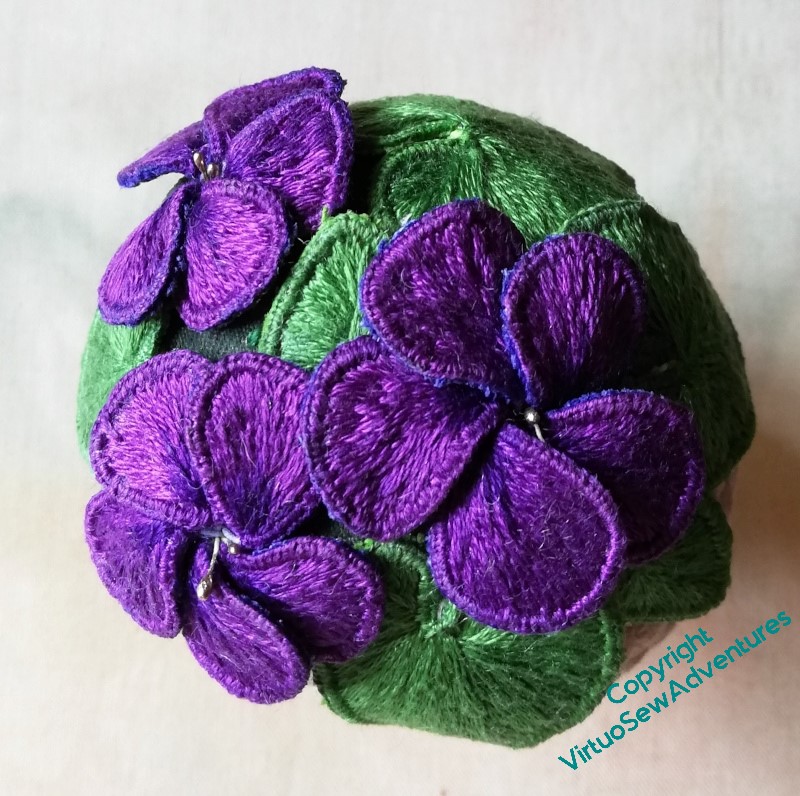
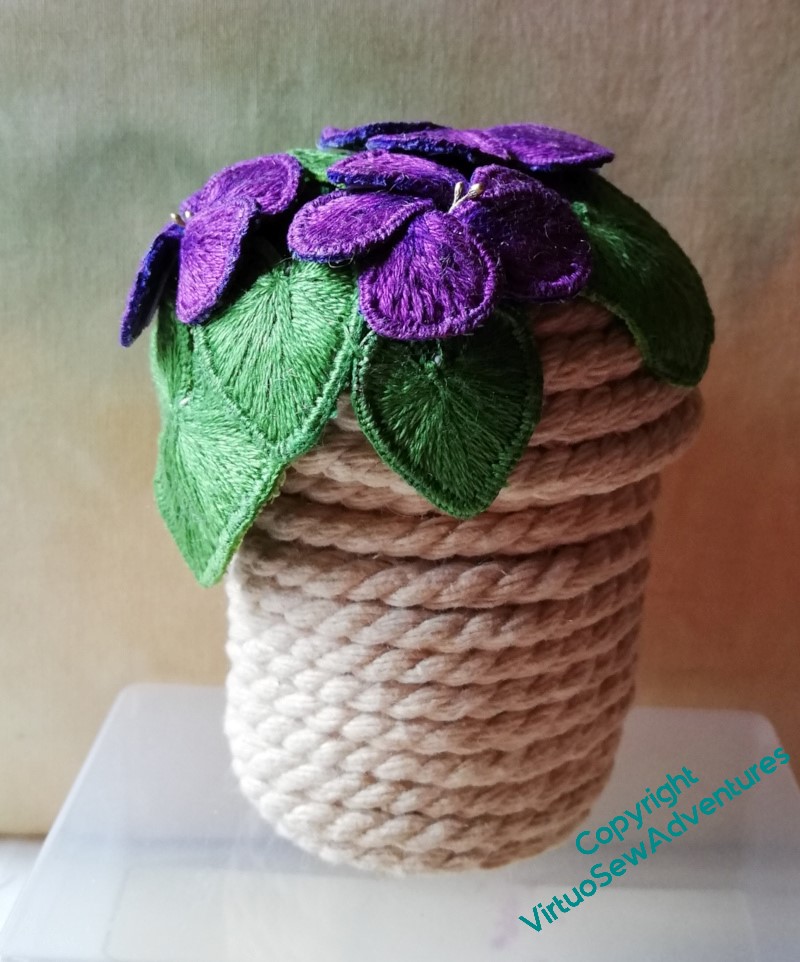
I got there in the end, I think we can say!
Reassured and making progress
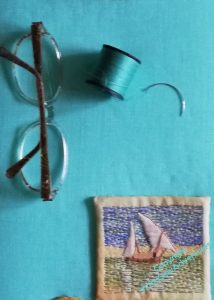
After gazing long and hard at my layout, I decided that I wasn’t likely to improve it and that the thing to do was to just get started.
I’m determined to get to grips with Grandmama’s curved needles, and this is a perfect occasion to do so, because it’s so very hard to manipulate a straight needle to do what you want that even a curved needle feels like it is helping!
Grandmama’s set included three sizes, and I’m using the smallest, which is marked “lampshade”. I’ve always wrestled with a straight needle for lampshades, so who knows, this skill may prove transferable!
I’m using ladder stitch, or at least, something very like ladder stitch, and I’m beginning to feel that the curved needle genuinely does help me to make progress.
This is also the point at which I am made most aware that developing these panels into individual pieces that I work on separately has made it possible to achieve what I want. The panels aren’t huge (Placidus, when I get to him, will be much bigger), but if they were already attached to the Map or the Excavation, it would be nearly impossible to reach some of the angles I want to.
I’ve found it easiest to work on stitch lines facing away from me, and while this hasn’t been entirely straightforward in all cases, it would be altogether impossible if the turquoise panels were already attached to the sandy ones.
Especially the short ones, where I would find myself leaning over the entire height of the Map or Excavation!
I do have some concerns that the linen will sag under the weight of the Spots, so I’ve set these aside for a couple of weeks, upright, to see whether I need to gather in any Unfortunate Happenings.
Spots laid out for attachment
If you compare these two pictures, you will see what I meant by saying the embroideries had personality that the photocopies lack!
Some of it may be down to better lighting, but I think even the Map and the Excavation are looking brighter and happier.
So now they are back in their box, ready to come out one at a time to be attached to the border panels.
The details of that attachment may require some wrangling, and as for the details of attaching the panels to one another – I’m still very unsure about how that will happen. At the moment my best guess is mirror plates, but if anyone has a better idea I would love to hear it!
More spots prepared
Originally the Cartouche was going to be rectangular, but as I started to cut the pelmet vilene I’m mounting the spots on, it began speaking to me very firmly.
Long term readers know that this sometimes happens to me, and I have learnt over the years that the sensible thing to do is listen. My projects almost always know better than I what they need to thrive.
In this case, I was informed that I should make the cartouche mounting echo the curves at the top while keeping the square edges at the bottom. It wasn’t easy to do – that silk noil fabric has a way of misbehaving that would make Robin Goodfellow whistle admiringly! – but now it is done, I’m inclined to agree.
The next spot I tackled was if anything an even greater challenge – a fiddly shape (really fiddly!), in quite a light fabric, which didn’t always respond as I expected.
You can see here just how be-pinned and be-poked the poor Tilapia became! There was much clipping and snipping, muttering and tugging, before I produced something that looked at all pleasing. Maybe that’s just to remind me of the reason I did him – hearing a modern glass artist saying that he’d tried to recreate the ancient glass vessel and found it really difficult – to such an extent that even with much practice, he couldn’t expect every fish to go swimmingly (as it were…!).
So, after much cutting and stitching, tugging and thinking, I’ve mounted all the Spots around shaped pieces of pelmet vilene, ready to be attached (somehow!) to the main colour block panels of the two main Amarna pieces.
Gratifyingly, they all have much more vivid personalities than the photocopies I’ve been using to plan their placement, so I think that will genuinely work. Thank goodness!
In the meantime, I’ve got them piled up in a box, all shouting at once that they consider themselves Absolutely Splendid, and will I please Get On With It…!
Preparing the “Spots”
Once I had some sense that I knew which blocks went where, and what shape I wanted them to be, I could begin to mount them. Some of them will be distinctly tricky, such as the Lotus Tile Fragments, the Nile Tilapia, and (especially), the Faience Hippopotamus.
Since I also picked up a shoulder injury, all this was slowed down by the necessity to do little bits at a time, rather than a whole orgy of concentration.
I worked on the Lotus Tile Fragment while I was stewarding an exhibition that some of my paintings were in. It’s a good idea to have something to do that’s small and easy to put down for that sort of occasion. It’s not a great look to loom at people who’ve come to stroll around, but equally, sitting, hands folded, demure and silent, might also put them off. Looking up with a friendly grin and then returning to something that’s plainly small and interruptible is a useful position between those extremes. ( I sold a painting, too!)
I had a very useful, and suitably faience coloured little box to hand in which all the pieces, so far, have fit rather neatly, keeping them dust-free and untangled.
It’s remarkably satisfying to see them all stacking up, and I have had an idea about details of display in the eventual, hoped-for, exhibition: I could do “record cards” for each piece in the style of something recorded from an excavation, thus providing information, but maintaining the theme.
So now, the question is – what information should I include?

